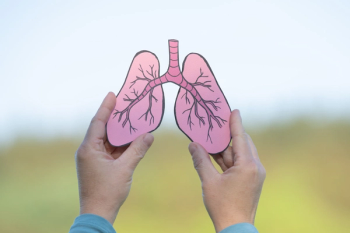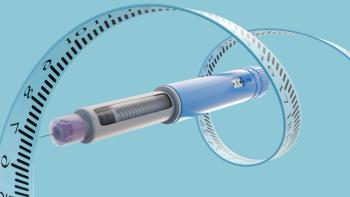Although it may feel like summer has just begun, the start of another school year is right around the corner. Parents and guardians are shopping for school supplies, new clothes and shoes, and just the right backpack. Pharmacists should be sure to remind them that routine wellness visits, immunizations, and nutrition are an important part of the back-to-school routine.
WELLNESS VISITS
A wellness visit, also known as an annual preventive health exam or annual physical, is a chance to focus on a patient’s health and catch potential issues early. Individuals older than 3 years should have a wellness visit every year. There are several benefits to well-child visits, including the following:
- Prevention: Ensuring all children are up to date on immunizations helps prevent illness and dangerous outbreaks. Pediatricians can also advise families about proper nutrition and safety at home and school.1
- Tracking growth and development: Evaluating growth and developmental milestones is a crucial part of a physical examination. Early recognition and intervention of growth and development failures provide more positive outcomes.2
- Psychosocial screening: A psychosocial screening is a series of questions and tools that evaluate a child’s mental health, family dynamics, social status, and ability to function in their community. It can also be used to assess a patient’s emotional health and self-perception. The goal of a psychosocial screening is to create a comprehensive picture of a person’s life that can help inform treatment goals and plans.3
- Vision screening: Evaluating vision can help detect risk factors or reduced acuity that may threaten the appropriate growth and development of a child’s eyes and visual system. Many eye problems can be asymptomatic; therefore, screening can facilitate early diagnosis and treatment.4
- Sports physical: A sports physical can be done at the same time as the annual physical. It focuses on reviewing the child’s current health status and medical history to ensure that the child is healthy enough to play their desired sport. The pediatrician will review any preexisting injuries and medical history to determine whether the child’s current fitness level will allow them to play the sport. If the pediatrician detects any condition(s) that may put the child at risk, further tests can be conducted to ensure the safety of the child both on and off the field.5
About the Author
Kathleen Kenny, PharmD, RPh, earned her doctoral degree from the University of Colorado Health Sciences Center. She has more than 25 years of experience as a community pharmacist and works as a clinical medical writer based in Homosassa, Florida.
VISION EXAMS
Eye problems in children can be obvious or subtle as their eyes and vision grow and change from year to year. School requires intense visual involvement: Learning can involve reading, writing, computers, and work on a chalkboard or smartboard. If their eyes are creating problems, children may feel tired, have decreased concentration, and perform poorly on exams. One of the most common vision issues in children is farsightedness, which can resolve without treatment but may require glasses. Early detection and treatment are important through regular comprehensive eye exams from a pediatric ophthalmologist.6
DENTAL EXAMS
Semiannual comprehensive pediatric dental exams allow dentists to look for cavities and other oral health issues while monitoring the development of the teeth and jaws. This allows for early, typically less invasive, treatment. This is also a good medium for educating parents and children on proper oral hygiene.7
COMMUNICATION WITH THE SCHOOL
The ideal time to communicate with schools and teachers is after they return from summer break and before school begins. Appointments can be set up to meet school personnel regarding any special needs or accommodations required for the child. This is also an ideal time to provide health-related paperwork.
- Vaccine exemptions: Exemptions from state or local immunization requirements may apply to some children. All states allow a medical exemption when a child has a medical condition that prevents them from receiving a vaccine. All but 3 states offer nonmedical exemptions for religious or philosophical reasons. Some states require new paperwork every school year for exemptions.8
- Medications and medical devices: All medications and medical devices should come to school in the hands of an adult and be handed to another adult. Medications must remain in the original containers. Any accompanying forms should be filled out completely and delivered with the medication or device. Injectable medications for allergies or hypoglycemia should be kept near the child, and the expiration date should be strictly followed.
- Allergies: Children with food allergies and their parents have firsthand experience with allergic reactions and are most familiar with a child’s unique signs and symptoms. Parents should give the school documentation that supports a physician’s diagnosis of a food allergy, as well as information about the child’s prior history and current risk of anaphylaxis.9
- Individual health plans: Children with chronic or serious health conditions may benefit from having an individual health plan that defines what school health workers will do in case of emergency and in everyday situations, including the administration of medication.
NUTRITION
Nutrition is the cornerstone of good health and development, particularly in children. The 2020-2025 Dietary Guidelines for Americans recommend that individuals 2 years and older follow a healthy diet that includes a variety of fruits and vegetables, whole grains, fat-free and low-fat dairy products, a variety of proteins, and oils.10 The benefits of proper nutrition include the following:
- Optimal growth: Children are in a constant state of growth and development. Adequate nutrition provides the necessary building blocks such as proteins, vitamins, and minerals required for proper development.
- Stronger immunity: A diet rich in fruits, vegetables, and whole grains provides essential nutrients that help strengthen a child’s immune system, reducing the risk of common infections and illnesses.
- Enhanced cognitive function: Proper nutrition impacts brain development significantly. Nutrients like ω-3 fatty acids, iron, and iodine are crucial for cognitive development and can improve learning and memory in children.
- Chronic health issue prevention: Childhood is the best time to establish healthy eating habits, which can prevent issues such as obesity, diabetes, and heart disease later in life.
CHOOSING A BACKPACK
A child’s backpack should not be significantly larger or smaller than the child’s torso, and the straps should fit comfortably on the shoulders and under the arms, allowing them to move freely. The weight of the backpack should not exceed 10% to 15% of the child’s body weight. Children should wear their backpacks using both straps, not slung over 1 shoulder, to evenly distribute the weight.11
REFERENCES
1. AAP schedule of well-child care visits. Healthychildren.org. Updated July 24, 2023. Accessed June 8, 2024. https://www.healthychildren.org/English/family-life/health-management/Pages/Well-Child-Care-A-Check-Up-for-Success. aspx
2. Balasundaram P, Avulakunta ID. Human growth and development. In: StatPearls [Internet]. StatPearls Publishing; 2024. https://www.ncbi.nlm.nih.gov/books/NBK567767/
3. Surveillance, screening, and psychosocial assessment for behavioral health concerns. American Academy of Pediatrics. Accessed June 8, 2024. https://aapca1.org/resource/surveillance-screening-and-psychosocial-assessment-for-behavioral-health-concerns/
4. Ambrosino C, Dai X, Antonio Aguirre B, Collins ME. Pediatric and school-age vision screening in the United States: rationale, components, and future directions. Children (Basel). 2023;10(3):490. doi:10.3390/children10030490
5. Sports physical. MedlinePlus. Updated April 27, 2023. Accessed June 8, 2024. https://medlineplus.gov/ency/patientinstructions/000673.htm
6. Four hidden signs of vision problems in kids. American Academy of Ophthalmology. Updated July 8, 2021. Accessed July 15, 2024. https://www.aao.org/eye-health/tips-prevention/four-hidden-signs-of-vision-problems-in-kids
7. Krol D, Whelan K. Good oral health starts early: AAP policy explained. Healthychildren.org. Updated December 19, 2022. Accessed June 8, 2024. https://www.healthychildren.org/English/healthy-living/oral-health/Pages/Brushing-Up-on-Oral-Health-Never-Too-Early-to-Start.aspx
8. What is an exemption and what does it mean? CDC. Updated October 12, 2017. Accessed June 8, 2024. https://www.cdc.gov/vaccines/imz-managers/coverage/schoolvaxview/requirements/exemption.html
9. Voluntary guidelines for managing food allergies in schools and early care and education programs. CDC. 2013. Accessed June 8, 2024. https://www.cdc.gov/healthyschools/foodallergies/pdf/20_316712-A_FA_guide_508tag.pdf
10. Childhood nutrition facts. CDC. Updated August 5, 2022. Accessed July 10, 2024. https://www.cdc.gov/healthyschools/nutrition/facts.htm
11. Backpack safety: it’s time to lighten the load. National Safety Council. Accessed June 8, 2024. https://www.nsc.org/community-safety/safety-topics/child-safety/backpack-safety-for-kids


















































































































































































































